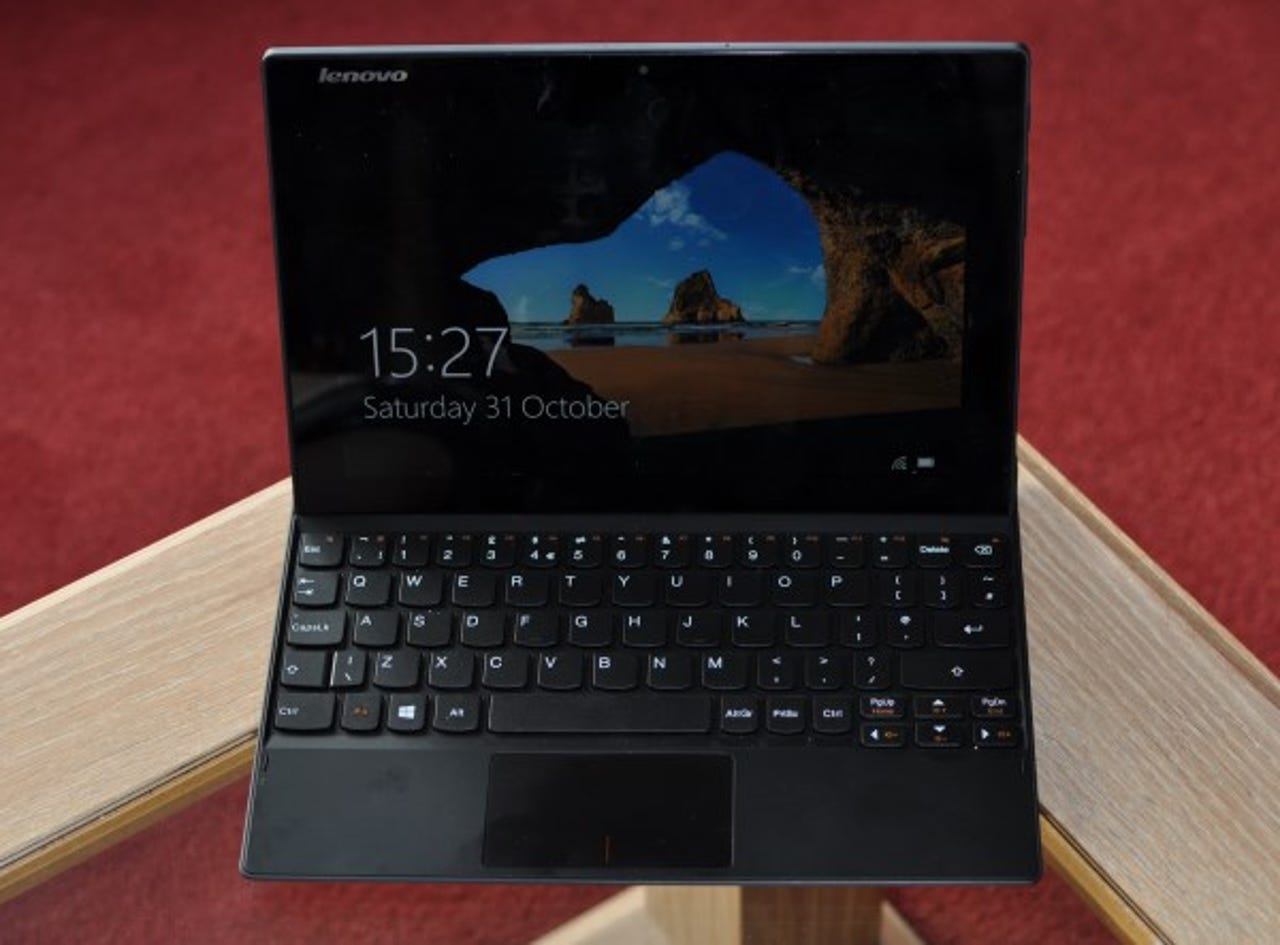Hands On: Lenovo MiiX 3 is better with Windows 10


Lenovo's third-generation MiiX 3 looks like an ordinary laptop, but it's really a 10-inch Windows tablet and a keyboard dock. The unusual thing about the design is that - as with the forthcoming Dell XPS 12 - the two parts are never really joined.
One advantage is that there's no delay in switching between the laptop and tablet modes. The disadvantage is that, with no hinge, the screen sits at a fixed angle. This could be a deal-breaker for some users, but third-party Bluetooth docks such as the Microsoft Universal Keyboard (MUK) suffer from the same problem, and plenty of people use those.
There are other reasons why I bought a MiiX 3 to replace the tablet/MUK combo I had been using for reading and writing on public transport and around the house....
First, the MiiX 3 has an IdeaPad-style Accutype keyboard, which is much more comfortable for touch-typing than Microsoft's MUK. In fact, it's better than most other 10-inch laptops, including the Asus Transformer T100 and the HP Stream 11.
Like Microsoft's Surface PCs, the MiiX 3 has electrical contacts and uses magnets to attach the screen to the keyboard. They are not as strong, but you can still lift the whole system by the screen without the keyboard falling on the floor.
Second, the MiiX 3 has a good 1920 x 1200-pixel IPS screen. (An earlier version had a 1200 x 800 screen.) It's not the brightest, but colour and contrast are both excellent for this class of machine. It only has five touch-points but it doesn't actually need more.
Third, it has a 2GB of main memory, where many 8-inch and 10-inch tablets have only 1GB. (It still runs 32-bit Windows on a 64-bit processor, but you can't have everything.)
Fourth, as you'd expect from a 10-inch convertible, the MiiX 3 is fairly small and light. The tablet part is 9.3mm thick and weighs 582g, while the keyboard dock adds 473g for a grand total of 1,055g (1.1kg) or 2.3 pounds.
Fifth, it was very cheap, as part of a special Windows 10 launch offer. The price climbed dramatically until stocks ran out, and discounts may be increasingly had to find.
In other respects, the MiiX 3-1030 Model 80HV has the sort of specification you'd expect: a 1.33GHz quad-core Intel Atom Z3735F (with Intel Burst up to 1.83GHz), 2GB of memory, and 32GB of eMMC Flash storage. The tablet part includes a MicroSD Card slot - needed to expand the storage to 64GB or more - plus a MicroUSB/charging port, MicroHDMI for video, and a combo audio port. The keyboard dock has two full-sized USB 2.0 ports.
The quad-core Atom Z3735F (Silvermont) delivers good performance for the price. It's faster than the Celeron-branded N28xx Atom chips used in most cheap Windows laptops, though not as good as the Pentium-branded N35xx range. The Z3735F got 5.9 on the Windows Experience Index and scored 202 on the NovaBench benchmark. It's fine for its intended purposes: web browsing, email, social networking, YouTube videos, and light Microsoft Office tasks. (A one-year Office 365 subscription is included in the price.)
For reference, the same 4W Atom Z3735F is also used in the Asus Transformer T100TAF and EeeBook X205A, the Acer Aspire Switch 10, and the Toshiba Satellite Click Mini.
Microsoft has deprecated its Windows Experience Index, but for comparison purposes, the MiiX 3 scored as follows: CPU 5.9; RAM 5.5; Graphics 3.9; Gaming graphics 4.1, and hard disk 7.0. It scored 336 on the NovaBench benchmark, being let down by the eMMC chip "hard drive".
Better with Windows 10
My MiiX 3 came with Windows 8.1 but Microsoft soon offered a free upgrade to Windows 10. This installed perfectly, and really improved the machine in at least three ways.
First, the high (1920 x 1200) resolution on a 10.1-inch screen meant everything was a bit too small. Windows 8.1 allowed scaling to a maximum of 150%, but with Windows 10, this went up to 175%. It helped.
Second, there was no way to control the keyboard dock's touchpad from Windows 8.1. After Windows 10 was installed, there was a new icon for the Synaptics TouchPad in the systray, which allowed full control. Now I could turn off "tap to click".
Third, Windows 10 includes Cortana, though the MiiX 3 installation said "Cortana Search is disabled by company policy" - a most unhelpful error message on a PC not running Windows 10 Professional. Happily, Cortana started working after I installed the English Language pack and downloaded the English UK speech language option.
Summing up
Such a low-powered device isn't going to be anyone's first choice PC, or even their first choice laptop. However, it works surprisingly well as a casual tablet, with the advantage that you can add a touch-typing keyboard almost instantly.
In other words, it has much the same appeal as an Atom-powered Microsoft Surface, but with a better keyboard and (at least in my case) a much lower price.